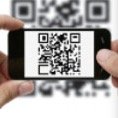The future’s in the cards
March 31, 2016

The practice of exchanging business cards has barely changed since their introduction in the 17th century. First popularized by the upper class to announce their arrival at high-society events or practically any other social occasion, these convenient little ‘calling cards’ soon took on an etiquette and style all their own.
Today, business cards in some ways represent a symbolic social contract in the business world. It’s common for office desks to be cluttered with piles of cards, which present the occupants with the long and tedious task of manually inputting the data, card by card, into a digital database.
The limitations of office desktops and notebooks add to the problem, but times are changing. The widespread use of mobile technology, and changes in how individuals manage their work life, have prompted companies to deliver innovative products that ensure business cards will continue to be relevant and easier to manage in the days and years to come.
From an advanced barcode solution that allows users to scan contact information into their devices, to apps that create and share virtual business cards, there are solutions for managing your business cards on the go.
QR CODES
Technology available in selected apps
QR codes, first designed for the automotive industry in Japan, are a type of matrix barcode gaining popularity commercially due to their quick readability and generous storage space.
Mobile text and voice messaging service WeChat was one of the pioneers of incorporating the technology into everyday use for iPhone, Android, Blackberry and Windows-based operating systems. Today, over 438 million users can use smartphones to scan QR codes and add new contacts to their WeChat accounts.
The addition of QR codes onto business cards is an emerging trend. QR codes may prove to be the logical next step for users to view and share digital content easily.
CAMCARD
$2.99; free version available; iOS, Android, Windows and Blackberry
Camcard is an app designed to scan, read and manage business cards. The creation from Intsig Information ensures that all contact information can be easily stored in the secure sector of the smartphone, saving space as well as time searching for contacts.
Camcard uses the smartphone’s camera to scan business cards with precision and identify specific content. Relying on key words, the app is able to distinguish between the person, the company and contact details, and accurately assign each set of data. With more than 100 million users, Camcard offers easy management of business card data on a single, secured platform.
camcard.com
QIKSHARE
Free; offers in-app purchases; iOS, Apple Watch and Android
A new piece of technology attempts to forgo the use of paper-based cards altogether. Near field communication (NFC) is a set of protocols that allows smartphones to establish wireless communication by touching the devices together.
The technology has been adapted by the application Qikshare, which facilitates social networking by allowing users to share contacts, photos, videos or files with each other. Available on both Apple and Android devices, the app does not require Bluetooth or WiFi to function.
Unlike sharing files through e-mail or text messaging, with Qikshare there is no limit to the number of contacts that can be shared at a single time.
qikshare.io
ZAP
Free; iOS
Each individual card costs time and money to create, but Zap, an app developed by Gladmen Inc, aims to provide a solution to this. By requesting permission to link directly to the user’s Linkedin, Facebook or Twitter account, the app gains access to the individual’s contact information and creates virtual business cards.
Sharing a virtual card can be done via e-mail or text message, but the app also fully supports social messaging apps such as WhatsApp, and can even produce a QR code to allow others to scan your contact information onto their phones easily.
However, the best way to hand out your virtual card is by “zapping.” With a simple flicking motion on your screen, you can send your business card to another Zap user.
zappp.co
CONDUCTIVE INK
Future technology
Imagine being able to add the contents of a business card by simply tapping it on the screen of your smartphone or tablet. That could soon be possible with T+ink’s Touchcode technology.
By using conductive ink, which it dubs “thinking ink,” the company has begun embedding this into packaging, labels and other objects. This can then be detected by smartphones by “touch.”
Unlike standard ink, conductive ink results in printed objects that conduct electricity. Touchcode is highly secure as each imprinted object has a unique ink pattern, likened to a fingerprint, making the technology extremely versatile.
By printing invisible codes onto business cards, the thinking ink could be read by mobile phones, meaning contacts and other relevant information can then be instantly saved into the device.
Others have looked into adapting this technology specifically for business card management, but since the technology is patented, an actual product is still pending.
t-ink.com




